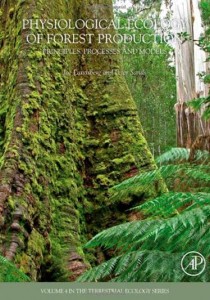
3-PG Forest Growth Model
 The 3-PG model (Physiological Processes Predicting Growth) was developed by Landsberg and Waring (1997). It was developed to bridge the gap between conventional, mensuration-based growth and yield, and process-based carbon balance models. The output variables it produces are of interest and relevance to forest managers.
The 3-PG model (Physiological Processes Predicting Growth) was developed by Landsberg and Waring (1997). It was developed to bridge the gap between conventional, mensuration-based growth and yield, and process-based carbon balance models. The output variables it produces are of interest and relevance to forest managers.
3-PG calculates the radiant energy absorbed by forest canopies and converts it into biomass production. The efficiency of radiation conversion is modified by the effects of nutrition, soil drought (the model includes continuous calculation of water balance), atmospheric vapour pressure deficits and stand age.
The carbon produced by the canopy is allocated to leaves, stems and roots, using dynamic equations that update the state of the system on a monthly time step. Calculations can be started at any time for which the state of the forest is specified; the model is then self-constrained. It is a generic model but needs to be parameterised for individual species. The software now available makes this relatively simple. The 3-PG model requires, as inputs, standard weather data, and information about soil depth and water- holding characteristics. Initial tree populations are specified and changes in stem populations calculated using a well-established mortality function. The model has relatively few parameters and is simple to use. Output includes stem biomass and volume, average stem diameters, stand basal area at any time and the time course of Leaf Area Index. 3-PG can be used to evaluate site potential and analyse the probable effects of varying growing conditions or management actions such as thinning or fertilisation. It has considerable potential as a tool for estimating carbon sequestration by forests and plantations and has been shown to be a valuable teaching tool.
